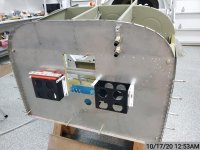I am planning the secondary power bus for my dual Lightspeed dual Garmin G3X VFR RV-9. I would like to know what size battery did you use and where did you mount it? I bought a 12 AH AGM battery that I planned to mount to the firewall in the cabin but I'm thinking it's too big to easily fit. I would like to learn how folks have implemented their second battery.
Van's Air Force
You are using an out of date browser. It may not display this or other websites correctly.
You should upgrade or use an alternative browser.
You should upgrade or use an alternative browser.
Second Battery Size and Location
- Thread starter hoyden
- Start date
Consider a standby alternator instead. See https://www.kitplanes.com/the-monkworkz-mz-30l-direct-drive-generator/
I have a dual EI system and the backup battery route just didn’t check all of the boxes.
I have a dual EI system and the backup battery route just didn’t check all of the boxes.
Thank you for your perspectives. I plan to use the Monkworkz generator, a second battery, and a cross-tie circuit breaker switch. I don't see any easy way to mount a second battery. I imagine a second battery is recommended even with the generator. I can see using the second battery to power the avionics (primarily the displays and EMS) when starting the engine. Then an avionics master switch to supply the primary avionics power once the engine is running.
Carl Froehlich
Well Known Member
Thank you for your perspectives. I plan to use the Monkworkz generator, a second battery, and a cross-tie circuit breaker switch. I don't see any easy way to mount a second battery. I imagine a second battery is recommended even with the generator. I can see using the second battery to power the avionics (primarily the displays and EMS) when starting the engine. Then an avionics master switch to supply the primary avionics power once the engine is running.
I recommend you prioritize your design to keep the engine running. This requires your Lightspeed Ignitions to be wired directly to a battery via a standalone breaker, each going to a separate battery. Never have engine electrical power on the output side of your master switch(es).
A second generator mitigates the risk of loss of primary generator - only. Two batteries and the nice Monkworz provide options for multiple backup modes when the “I did not think of that” system fault happens. But - excessive use of buss ties and such add (in my opinion) unnecessary complexity, adding to pilot load as well as (in most cases) adding new points of potential failure. Continued IFR flight without pilot action on a system fault should be the objective of your design. System recovery (e.g. a pre-determined backup mode) is then done in a less than crisis manner.
One other point - there are advantages to having identical batteries in a dual battery design.
Carl
Last edited:
jjconstant
Well Known Member
If you're asking purely about physically where to mount the second battery, I have a dual battery, single alternator system and I simply took the location in the plans on the firewall, made a tray large enough for 2 identical PC680's with aluminum angle hold downs and added aluminum angle bracing on the cockpit side of the firewall to compensate for the added weight, keeping in mind it has to be able to withstand the factory g limits. I have 2 independent master switches, one for each battery and independent grounds. When one master is off, that battery is completely isolated from the entire electrical system.
I have dual P-Mags, so operationally I'm different than your architecture. On cross countries, I fly on one alternator/battery like most non experimentals and keep the other off in case I have a failure of any kind. If I have a failure I can turn everything off and then switch to the other battery only and it will be at full capacity.
I have dual P-Mags, so operationally I'm different than your architecture. On cross countries, I fly on one alternator/battery like most non experimentals and keep the other off in case I have a failure of any kind. If I have a failure I can turn everything off and then switch to the other battery only and it will be at full capacity.
hgerhardt
Well Known Member
Have you considered the EarthX ETX-104 avionics backup battery? I installed one in my dual-Lightspeed-equipped -6, mainly as backup power for one of the ignitions. It's mounted "upside down" in between the inner and outer instrument panels, left of the radio stack.
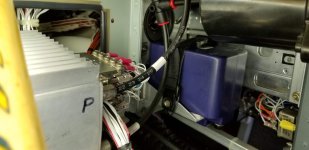
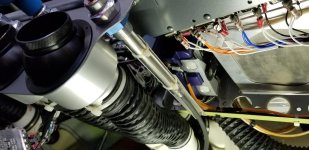


I agree with you but I just installed a Surefly ignition under their STC in a C-182 and Surefly calls out that the power for the ignition to be supplied by the output side of the battery solenoid. I don't like that either.I recommend you prioritize your design to keep the engine running. This requires your Lightspeed Ignitions to be wired directly to a battery via a standalone breaker, each going to a separate battery. Never have engine electrical power on the output side of your master switch(es).
A second generator mitigates the risk of loss of primary generator - only. Two batteries and the nice Monkworz provide options for multiple backup modes when the “I did not think of that” system fault happens. But - excessive use of buss ties and such add (in my opinion) unnecessary complexity, adding to pilot load as well as (in most cases) adding new points of potential failure. Continued IFR flight without pilot action on a system fault should be the objective of your design. System recovery (e.g. a pre-determined backup mode) is then done in a less than crisis manner.
One other point - there are advantages to having identical batteries in a dual battery design.
Carl
Carl Froehlich
Well Known Member
I agree with you but I just installed a Surefly ignition under their STC in a C-182 and Surefly calls out that the power for the ignition to be supplied by the output side of the battery solenoid. I don't like that either.
I also assume the STC requires the other ignition to be a mag as risk mitigation against this obvious design flaw.
Luckily in our world we have opportunity to do better.
Carl
I agree with you but I just installed a Surefly ignition under their STC in a C-182 and Surefly calls out that the power for the ignition to be supplied by the output side of the battery solenoid. I don't like that either.
Don't you still have to keep a mag in cert world? Different philosophy if still true.
Carl Froehlich
Well Known Member
To the OP’s original question, here is how an RV-14A builder added a second PC-680 using a standard Van’s battery box.
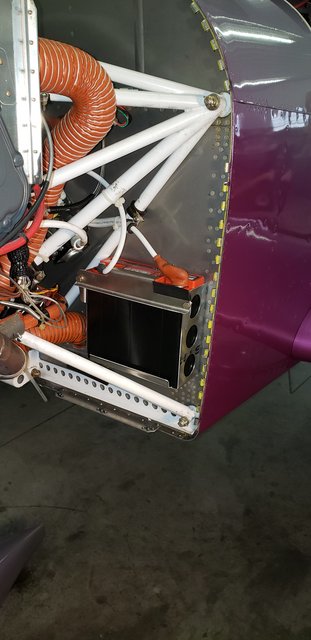
Carl

Carl
Yes. Still need a mag but I think Surefly is working on a alternative.Don't you still have to keep a mag in cert world? Different philosophy if still true.
I'm ambivalent about using Li so I stayed with an AGM battery. Li batteries are easier to mount but seem finicky with charging and discharging.
I wonder about Li battery failures, their high current demand when charging, and the voltage drop off when discharged below 10V.
I am working out a battery mounting case for my AGM battery on the opposite side of the firewall from my main battery. There's limited room and ease of maintenance in that location. Having maintained my RV-6 for the past 22 years I am focused on making maintenance as least troublesome as I can.
In addition to the Monkworkz generator I have planned for two pullable panel breakers one for each Lightspeed with the power coming directly from each battery. I will have two avionics master switches and a cross tie circuit breaker.
Now that I have a second battery mount I can easily experiment with trying a Li battery that can readily fit where the AGM battery resides.
I wonder about Li battery failures, their high current demand when charging, and the voltage drop off when discharged below 10V.
I am working out a battery mounting case for my AGM battery on the opposite side of the firewall from my main battery. There's limited room and ease of maintenance in that location. Having maintained my RV-6 for the past 22 years I am focused on making maintenance as least troublesome as I can.
In addition to the Monkworkz generator I have planned for two pullable panel breakers one for each Lightspeed with the power coming directly from each battery. I will have two avionics master switches and a cross tie circuit breaker.
Now that I have a second battery mount I can easily experiment with trying a Li battery that can readily fit where the AGM battery resides.
Have you considered the EarthX ETX-104 avionics backup battery? I installed one in my dual-Lightspeed-equipped -6, mainly as backup power for one of the ignitions. It's mounted "upside down" in between the inner and outer instrument panels, left of the radio stack.
View attachment 42905 View attachment 42904
2nd Van's battery box if that works for you.
The pilot side battery is where I plan to mount my oil cooler. I ended up fabricating a battery box and installing it on the opposite side of the firewall from the main battery. The 12 AH battery should provide enough juice to limp home from just about anywhere. After talking with my tech advisor I learned he used a much smaller 5 AH battery. He explained the battery is intended to provide filtering for the vacuum pad mounted alternator. This is what happens when I strike out on my own and I go overkill.
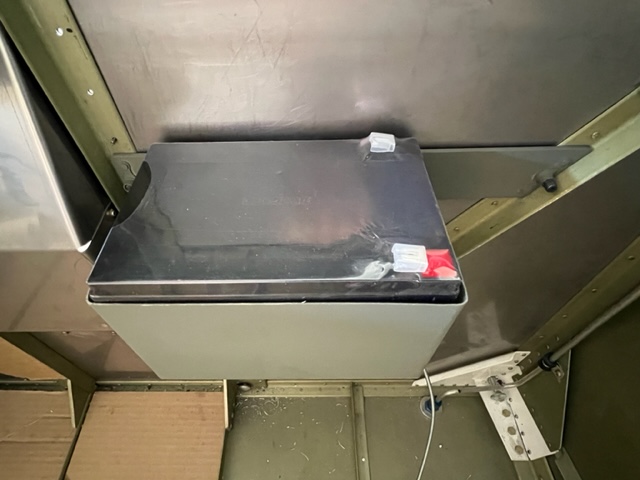
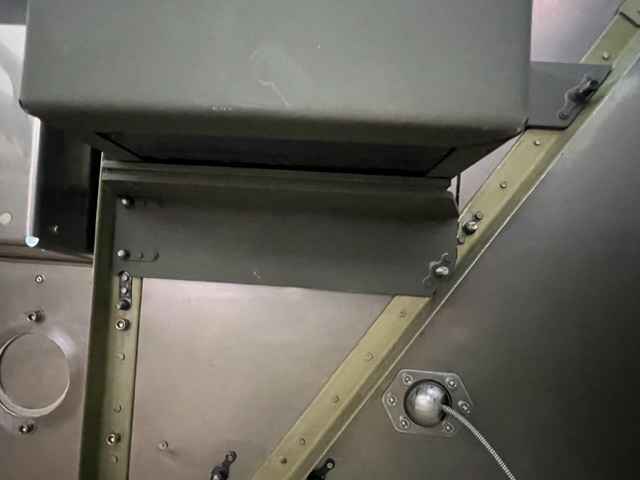
dmattmul
Well Known Member
The lower the hotter
My second battery is mounted low on the firewall and runs 30 F higher than the plans firewall location. Mounting higher better.
To the OP’s original question, here is how an RV-14A builder added a second PC-680 using a standard Van’s battery box.
Carl
My second battery is mounted low on the firewall and runs 30 F higher than the plans firewall location. Mounting higher better.



